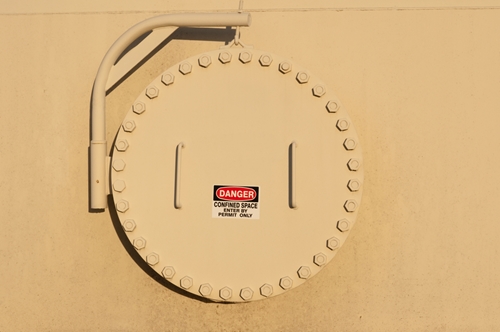
The U.S. Occupational Safety and Health Administration recently announced it issued a citation after inspections revealed inadequate safety measures were in place at a certain company following a workplace injury.
In March 2016, a worker at an auto plating company suffered third-degree burns to his foot after he fell into an acid-etching tank. The tank had been heated up to a temperature greater than 170 degrees Fahrenheit. The worker fell into the tank while he was trying to fix a jam in the conveyer arm.
OSHA posted a danger notice shortly after the accident occurred. During its inspection, the agency discovered there was no fall protection equipment in place to prevent the incident from happening. Additionally, the machine operator was not wearing the necessary personal protective clothing that may have helped prevent such severe burns and skin grafts on his foot.
Additionally, the safety agency also said that the company the machine operator worked for did not have a confined spaces program in place or machine safety procedures that would have prevented equipment from being operated on during maintenance.
More concerning was the fact that following the workplace injury, the same company allowed employees to still climb on top of tanks without further safety guidelines in place. In a press release, Howard Eberts, area director of the Cleveland OSHA region, said the company where the machine operator worked was entirely aware of the risks, especially considering that in the last five years, seven employees also fell into the tanks.
Eberts added that the company needs to immediately re-evaluate its safety guidelines, training program and the use of PPE.
However, all companies should remember to follow best practices when it comes to safety, especially in confined spaces.
Safety in confined spaces
Confined spaces are those that aren’t specifically designed for individuals, yet workers enter on a daily basis for various tasks at hand. According to OSHA, these workspaces are not meant to be occupied for long periods of time, partly due to the fact there are often limited ways of entering and exiting.
Typical confined spaces may be any of the following:
- Tanks
- Vessels
- Silos
- Manholes
- Tunnels
Confined spaces are not just limited to areas where workers may not have a lot of room to maneuver. The agency also stated that a confined space can be one where a worker may be engulfed by some type of material or substance.
The recent incident at an auto parts plating facility highlights the dangers of confined spaces and how they can be encountered no matter the industry. As such, workers may face a variety of potential issues. Employers will need to ensure workers are properly protected and know what to do when they enter a confined space.
Confined spaces are particularly problematic because an employee can quickly run out of oxygen or encountered a harmful pollutant. Protective equipment, such as personal respirators, needs to be kept on hand and maintained for these situations.
It’s also on the employees and co-workers to ensure everyone is following safety protocols. From following proper procedures to checking to see if PPE is being used, workers help add another layer of safety.
Most important for an employer is the development of a confined spaces safety program. Safety guidelines will provide helpful information to workers. These programs may also differ based on the industry a company does work in.
Updated rules and regulations from federal and state safety agencies also have pushed out updates from time to time. When it comes to confined spaces, companies and employees can’t afford to neglect information or safety programs.








